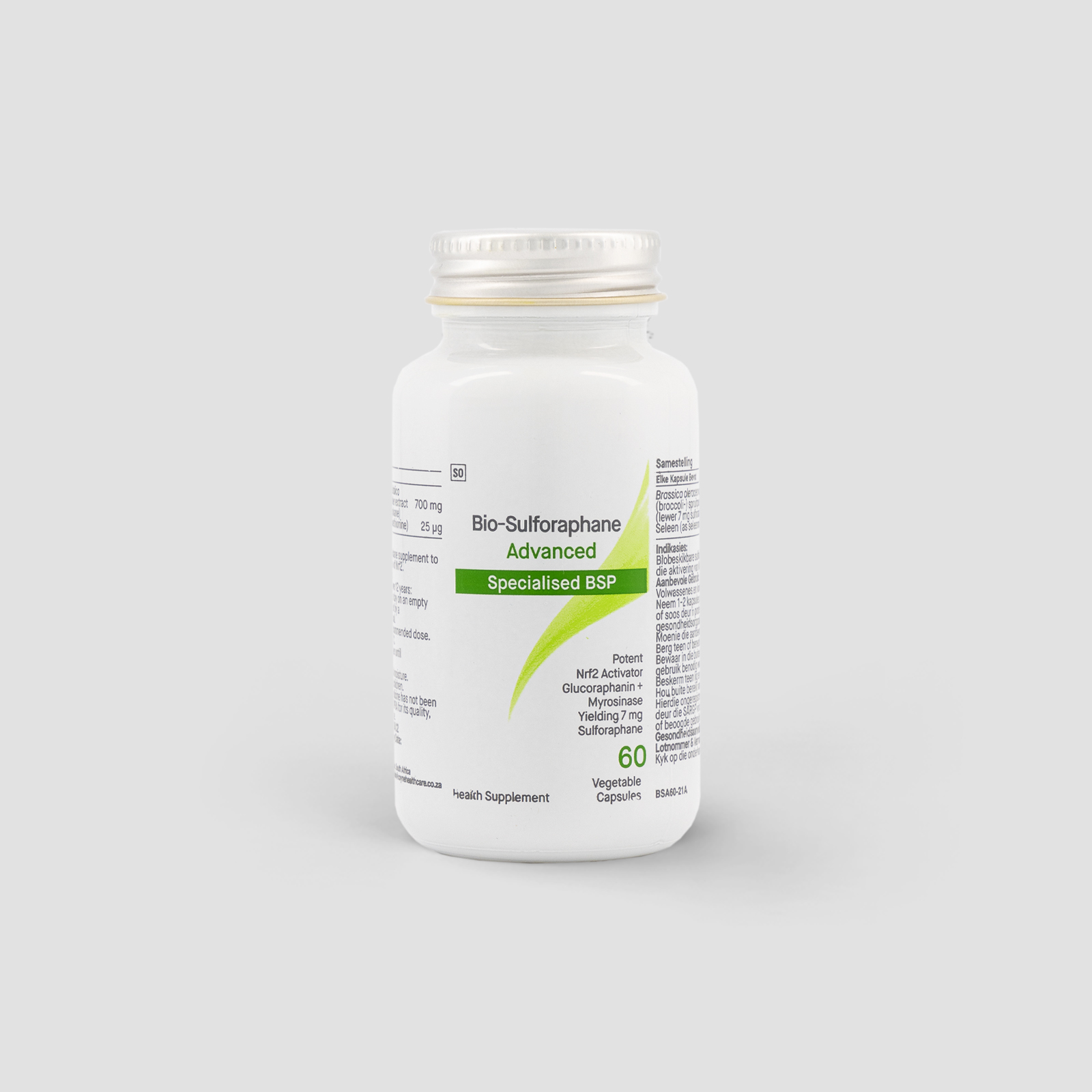Found in cruciferous vegetables – especially broccoli and its sprouts – sulforaphane is best known for its potent antioxidant, anti-inflammatory, and detoxifying properties. Over the past few decades, this compound has been the subject of numerous studies exploring its potential to support cellular health, reduce the risk of chronic diseases, and promote overall wellbeing.
This comprehensive guide will cover everything you need to know about sulforaphane: what it is, how it works in the body, its major health benefits and the best dietary sources. Whether you’re looking to boost your antioxidant defences, support brain and heart health, or simply explore the benefits of plant-based compounds, understanding how sulforaphane works is a smart step in taking charge of your long-term health.
What Is Sulforaphane?
Sulforaphane is a powerful natural compound found primarily in cruciferous vegetables, such as broccoli, broccoli sprouts, cabbage, kale, and cauliflower. It is formed when the precursor glucoraphanin (present in cruciferous vegetables) is broken down by the enzyme myrosinase – a process that occurs upon chewing, chopping or cooking. While broccoli sprouts are one of the richest natural sources, it’s difficult to consistently eat enough to achieve therapeutic levels, which is why supplementation is often recommended. Modern sulforaphane supplements, particularly those using stabilised extracts, offer the active compound directly, ensuring more reliable absorption and biological activity [1,5].
What Are the Benefits of Sulforaphane?
Sulforaphane offers several science-backed health benefits:
- Neutralises harmful toxins: As a potent antioxidant, sulforaphane helps eliminate free radicals–unstable molecules that damage healthy cells. These are formed due to factors like pollution, UV radiation, food additives, and even digestion [2].
- Reduces inflammation: Chronic inflammation is linked to various age-related diseases. By neutralising toxins, sulforaphane also calms inflammation in the body and can support healthy ageing [4].
- Activates cellular defences: Sulforaphane activates Nrf2, a cellular defence mechanism against oxidative stress, and its activation can influence apoptosis (programmed cell death) – sometimes inhibiting it, in healthy functioning cells, and sometimes promoting it, in diseased and damaged cells [9,10].
- Easy to access: Sulforaphane is naturally present in cruciferous vegetables like broccoli, kale, and Brussels sprouts. Eating them raw, steamed, or roasted is a simple way to benefit – no complicated preparation required [2].
- Hormonal balance: Sulforaphane has been shown to support oestrogen metabolism through the upregulation of phase 2 detoxification, therefore promoting a favourable balance of oestrogen metabolites [3].
- Cognitive improvements: Research shows that 12-week sulforaphane supplementation can have a positive effect on cognitive functioning and mood in healthy older adults [11].
How to Maximise Sulforaphane Intake
- Choose broccoli sprouts/seeds: Packs the highest glucoraphanin levels– broccoli seeds produce sprouts with up to 100× more than mature heads [1].
- Raw or lightly steamed: To preserve myrosinase, eat raw or steam for 1–3 minutes; avoid boiling or microwaving, which destroys enzymes.
- Add mustard seeds or powder: Mustard contains myrosinase that can boost sulforaphane formation, especially when vegetables are cooked [6].
- Supplement: Broccoli sprout extracts provide higher doses of sulforaphane than eating cruciferous vegetables alone [7].
Is Eating Regular Broccoli Enough?
While mature broccoli does contain sulforaphane precursors, it provides significantly lower concentrations compared to broccoli sprouts – up to 40 times less of the active compound. This means you’d need to consume large quantities of mature broccoli daily to achieve the same therapeutic potential. Supplementation offers a more efficient and consistent way to obtain a clinically relevant dose of sulforaphane, particularly for individuals seeking targeted antioxidant and cellular support [7].
Try Biomax® Bio-Sulforaphane Advanced for concentrated sulforaphane from broccoli sprout extract to combat oxidative stress, inflammation, and support detoxification and hormonal health.
Can You Take Sulforaphane Every Day?
Sulforaphane can be taken daily and is generally well tolerated. It typically begins activating the Nrf2 pathway – a key cellular defence mechanism – within hours, though noticeable benefits may take days to weeks depending on the condition [8].
Who Should Take Sulforaphane?
Sulforaphane may benefit smokers, people exposed to environmental toxins, those experiencing oestrogen dominance, and individuals seeking antioxidant support. However, it may not be suitable for those with certain thyroid issues or on specific medications, so it’s always best to consult a healthcare provider.
Sulforaphane is a promising phytochemical known for its antioxidant, anti-inflammatory, detoxifying, and potentially disease‑preventive properties. While clinical proof remains limited, the evidence supports eating more cruciferous vegetables, raw or lightly cooked, ideally with mustard seeds or sprouts, or considering supplementation to increase concentration and its therapeutic effects.
This content is for informational purposes only and does not constitute medical advice. Always consult with your healthcare provider before starting any new supplement, especially if you are pregnant, nursing, have a medical condition, or are taking prescription or chronic medication.


